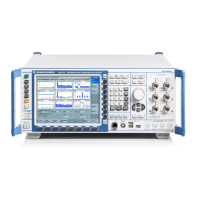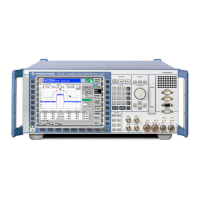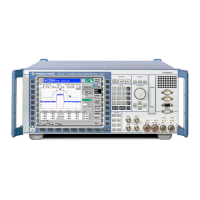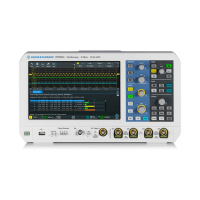System Overview
R&S
®
CMW500
65User Manual 1173.9463.02 ─ 06
| E | = | Z - R’ | Magnitude of the error vector, calculated at each sample in the measurement inter-
val.
Δ φ Phase error
| Z | - | R’ | Magnitude error
In general the measurement dialogs show the relative magnitude error and the relative
EVM, i.e. the quantities defined above divided by the magnitude of the ideal modulation
vector | R’ |.
The Error Vector Magnitude is calculated as the ratio of the RMS value of E to the RMS
value of R’ in percent or in dB:
EVM [%] = RMS (E) / RMS (R’)) * 100%
EVM [dB] = 20 log (EVM [%]/100%)
The Code Domain Error (CDE) is calculated as follows: The error vector E = Z - R’ is
descrambled and projected onto all code channels of a specific spreading factor (SF).
For each of the resulting projected error vectors E
k
(k = 0 to SF - 1), the RMS value is
calculated. The CDE is calculated as the ratio of this RMS value
to the RMS value of R’
in dB, i.e. PCDE = 20 * log [RMS (E
k
) / RMS (R’)] dB.
The Peak Code Domain Error (PCDE) is the maximum code domain error. It is calcu-
lated as the ratio of the maximum of the RMS values of E
k
to the RMS value of R’ in dB,
i.e. PCDE = 20 * log [max RMS (E
k
) / RMS (R’)] dB.
The EVM is averaged over a WiMAX burst as described in section "Measurement
Results" in the description of the "WiMAX measurement" firmware application.
Measurements
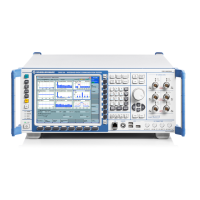
